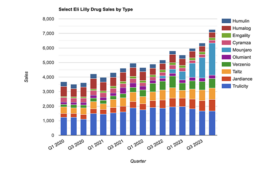MicroConstants of San Diego, California, a GLP-compliant contract research organization (CRO) specializing in bioanalytical and pharmacokinetic analysis, has acquired access to a new nanosizing technology that transforms water insoluble compounds into nanoparticles, making formulation preparation and dosing for toxicology studies easier. The method has been proven to increase the gastro-intestinal absorption of highly insoluble compounds ensuring maximal oral exposure for toxicology studies.
Many commercially available medications and a large majority of New Chemical Entities (NCEs) produced are poorly soluble. For existing medications, this leads to costly and poorly absorbed medications that are minimally effective. For poorly soluble NCEs, higher doses, poor efficacy results, and increased production costs often make them non-commercializable. Nanotechnologies have been proven as a valuable adjunct to the development of new therapeutics. Nanoparticles provide a much larger surface area thereby increasing the dissolution rate resulting in enhanced absorption. Nanosizing a compound elicits improved drug loading, exposure, and bioavailability, and faster onset (earlier Tmax).
The patented, proprietary nanosizing process used at MicroConstants does not involve water or mechanical shear, so it is faster and more efficient than aqueous-based technologies. Furthermore, the process typically does not require the addition of excipients, leaving the pure active pharmaceutical ingredient (API) ready for easy dispersion as a convenient suspension formulation. The technique provides higher dose loading (50-60%), and is amendable to all routes of extravascular administration. The particle size is reproducible and the process is completely scalable. n
This news was featured in Drug Discovery & Development magazine: Vol. 13, No. 3, April 2010, p. 35.
Filed Under: Drug Discovery




